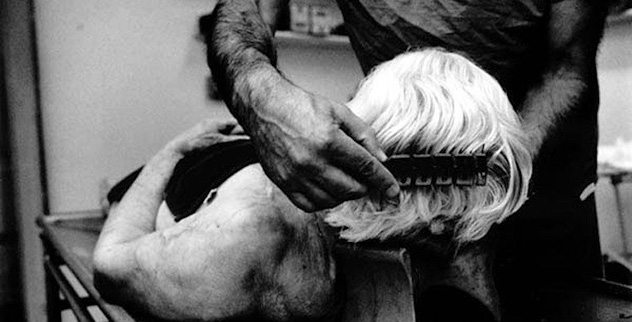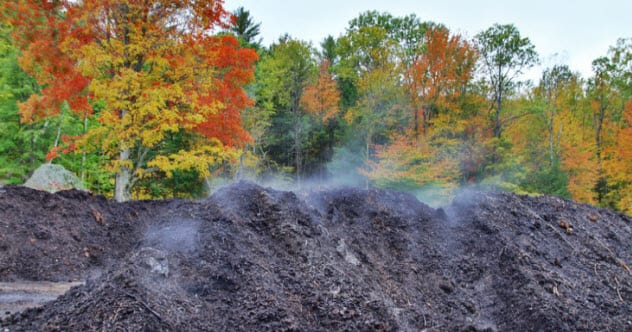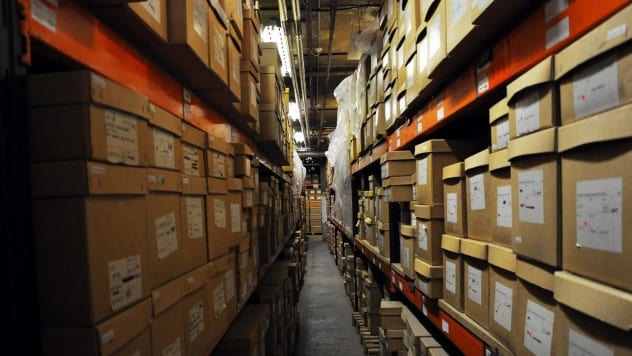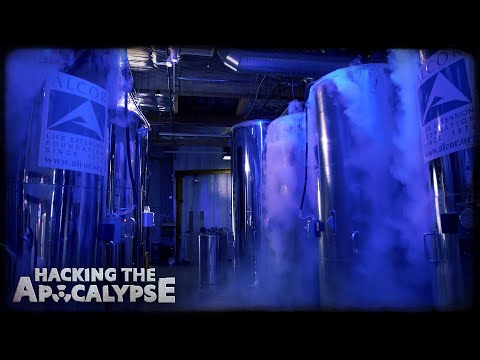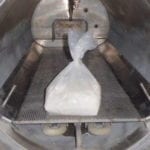Death is inevitable; therefore, decision-making regarding end-of-life body disposal is inevitable. It is a choice that we will likely be faced with more than once, ranging from consideration of what we want for our own bodies when we die to making decisions for loved ones. There are currently two primary modes of body disposal in the United States: traditional cemetery burials and indoor cremations. According to the National Funeral Directors Association 2021 report, the projected 2021 burial rate is about 36.6% and the cremation rate is 57.7%. However, more and more alternatives are being offered each year, giving us the opportunity to be more creative and intentional with end-of-life decisions. Note: This list is not exhaustive and is primarily relevant to the United States. Other countries and cultures have other ways to honor their dead. SEE ALSO: Top 10 Funerals that Went Horribly Wrong
10 Backyard Burial
Did you know that you may be able to bury a loved one in your own backyard? This may sound oddly reminiscent of a horror movie or True Crime body disposal, but it can, in fact, be a legal way to honor a loved one. This doesn’t mean everyone can bury bodies in their backyards willy-nilly— there are laws and zoning requirements that must be upheld. Unfortunately, if you reside in California, Indiana, or Washington, home burials are explicitly forbidden. It is probably wise to abide by these laws because, in California, if someone is found guilty of depositing human remains anywhere other than a graveyard, they are likely to face jail time and/or fines of up to $10,000. Within the states in which home burials are not explicitly forbidden, ten require a funeral director to be involved in the process even though you are burying someone in your own backyard. In general, specific policies and zoning requirements need to be reviewed on a state-by-state basis. New Hampshire, for example, requires bodies be buried at least 50 feet from water sources and 100 feet from buildings. If you like the idea of a home burial, consider long-term consequences, such as property value. If you decide to move and want to sell your house, the revelation that human remains are on the property could be off-putting to potential buyers.
9 Open Air Cremations
Typical cremations take place inside in industrial-looking incinerators, but an alternative to these traditional cremations is open-air cremation. This takes place outside on a funeral pyre, which is typically a pile of wood or other structure that a body is laid upon and burned. Crestone, Colorado is currently the only place in the United States where open-air cremations are legal, and it is only available to Saguache County residents who have lived in the community for more than three months. These cremations take place through a not-for-profit organization called Informed Final Choices (IFC) in which families and communities are heavily involved in creating very personal end-of-life rituals for their loved ones. Open-air cremations have a different level of intimacy to traditional ones in that community members can gather to put gifts and wood on the pyre and watch as flames envelop their loved one. Don’t fret if you want the opportunity to participate in an open-air cremation because more states are likely to join the bandwagon in coming years. The Maine state legislature is currently reviewing a proposal that would legalize funeral pyres for a nonprofit that has at least 20 acres of land.
8 Alkaline Hydrolysis
Alkaline Hydrolysis is the liquid cremation of the post-death world. Instead of fire, it uses water (95%), alkaline chemicals (5%) and heat to speed up the decomposition process. Bodies are put in water- and air-tight chambers that hold one hundred gallons of liquid and are heated up to temperatures between 199- and 302-degrees Fahrenheit. The amount of time it takes for the body to disintegrate is dependent on sex, weight, and body mass, anywhere from 3 to 16 hours. The chemicals, such as hydroxide, sever the chemical bonds in the body, leaving effluent (amino acids, water, salt) and bone fragments behind. Alkaline hydrolysis is an “eco-friendlier” alternative to traditional cremation. It is currently legal in at least 18 states, but that is likely to continue to increase.
7 Green Burial
Green Burials do away with embalming fluids, which are often used in traditional burials to temporarily preserve bodies. Bodies decompose in their due course anyway, and embalming fluids are toxic for the environment and run the risk of leaching into groundwater, so eliminating them from the burial process is healthier for the environment. Green burials also eliminate vaults, which are used in traditional cemeteries to preserve ground level above the casket. Additionally, green burials use biodegradable containers, eliminate pesticides/fertilizers on burial ground, and prioritize sustainable management practices. Overall, green burials reduce carbon emissions, protect worker health, and restore habitats, and they allow for the complete decomposition of the body back into the Earth. Additionally, they tend to run cheaper than traditional burials because embalming and vault costs are eliminated, and biodegradable caskets are usually cheaper. Here is a list of Green Burial Cemeteries in the United States: https://www.greenburialcouncil.org/gbc_certified_cemeteries-262427.html.
6 Burial Pod
Have you ever dreamed of turning into a tree? Burial pods and biodegradable urns are the closest you can get to realizing that goal. Burial pods are biodegradable egg-shaped capsules; smaller ones are used to house ashes and larger ones contain bodies placed in the fetal position. These capsules are buried underground, and the tree of choice for grieving families is placed atop. Instead of cutting down trees to create caskets, trees are planted and nourished by decomposing bodies, thereby decreasing the environmental impact. Prices vary from $330 for Capsula Mindi capsules to $140 for Bios Urns to $129 for Living Urns.
5 Mushroom Suits
If you would rather join the fungi kingdom than the plant kingdom, mushroom suits are an alternative to burial pods. Mushroom suits are still in relatively early testing stages, but they have potential. These suits are biodegradable and composed of a mix of mushrooms and microorganisms that work to decompose bodies as well as neutralize toxins from the bodies before they can leach into the soil, so, yet another eco-friendly option. Watch this video on YouTube Actor Luke Perry was buried in a mushroom suit upon his unexpected 2019 death.
4 Compost
Composting isn’t just for food waste, it’s for bodies too! In 2021, Colorado and Oregon became the second and third states to legalize human composting, following Washington state’s 2019 legalization. At Recompose, a Washington-based organization, bodies are placed in 4ft tall, 8ft long vessels with alfalfa, straw, wood chips, and other plant material. It could be said to be equivalent to a compost bin, but for bodies instead of food waste. Like a typical compost bin, microbes break down the body into its simplest components through aerobic (oxygenated) respiration, leaving behind nutrient-dense soil. The process takes 30 days and results in one cubic yard of soil. The remaining soil can then be donated to Recompose’s Bells Mountain land trust or returned to the family. Unfortunately, or fortunately depending on your take, soil from human compost cannot be used to grow food for human consumption. This saves an awkward dinner conversation. Imagine, someone saying “these tomatoes are delicious! Where did you get them?” You respond, “they are homegrown, nourished by my very own mother.” It would certainly give the term “Mother Earth” a new meaning. Human composting, also known as Natural Organic Reduction (NOR), is one of the most eco-friendly body disposal options in that between .84 and 1.4 metric tons of carbon dioxide are prevented from entering the atmosphere per composted body.
3 Body Donation
Rather than an immediate return to nature, body donation is another after-death, body option. This is different to organ donation because organ donation refers to donating specific parts of the body— such as heart, lungs, kidney, corneas, skin, etc..— directly to another person in order to save or enhance their life, whereas full body donation refers to donating your full body to a medical institute for research and educational purposes. This can still be life saving as information gleaned through research can be used to refine medical techniques and information that students learn through working on cadavers (corpses) factors into their understanding of human bodies when working on future live patients. You should sign-up with an organization before you die as some organizations will only accept bodies if it was stipulated by the donor before death, not by their family after their death. Unlike with organ donation, there is not a nationwide database that coordinates donations, but you can research set organizations that align with what you are looking for. You can look into your state’s anatomical board or individual medical institutions. When you donate your body to science, it is important to note that you don’t necessarily get to choose exactly what happens with your body. It could become a cadaver used by medical students or used in crash dummy testing research or used for plastic surgery practice or used for forensics research or many other possibilities. Most people are eligible for body donation, save for certain circumstances including recent surgeries, infectious diseases, or extreme obesity or emaciation. In addition to contributing toward potentially life-saving research, body donation is easier on the budget than traditional burials. It is usually free, save for minimal transportation charges.
2 Cryonics
Have you ever dreamed of coming back to life decades or centuries into the future? If so, cryonics might be the answer for you. Although, it is said to be more pseudoscientific than scientific, so your journey to the future may end in a -320 Fahrenheit metal tank. Cryonics is the process of storing human bodies at very low temperatures with the hope that science will advance enough to reanimate the corpse in the future. When you die, your body is stabilized and packed with ice until you are transported to a cryonic facility where you are injected with a chemical mixture called a cryoprotectant — a human antifreeze. This protects organs from ice formation at extremely low temperatures, and, instead, puts cells in suspended animation. This is a pricey post-death option as it can cost up to $150,000 for full body preservation. However, if you are more frugal and not too attached to your body from the neck down, you can pay $50,000 to preserve your head. Some people believe future technology will be able to regenerate the rest of the body. As of 2021, there are only about 1,700 people who have chosen this route.
1 Eternal Reef
Finally, an Eternal Reef is another Green Burial-certified option for your body after death, particularly if you prefer an aquatic send-off to a terrestrial one. An Eternal Reef is a human-made reef that replicates the marine environment. Cremated remains are blended into an environmentally safe, marine-grade concrete reef ball. Families are permitted to help mix the remains into the concrete as well as to personalize the reefs in other ways (i.e., handprints and written messages). These reef balls are then permanently placed in permitted ocean locations to become part of already existing reefs, thereby strengthening the ocean’s waning reef systems. Prices vary depending on the size of the reef ball from $3,000 up to $6,500.



